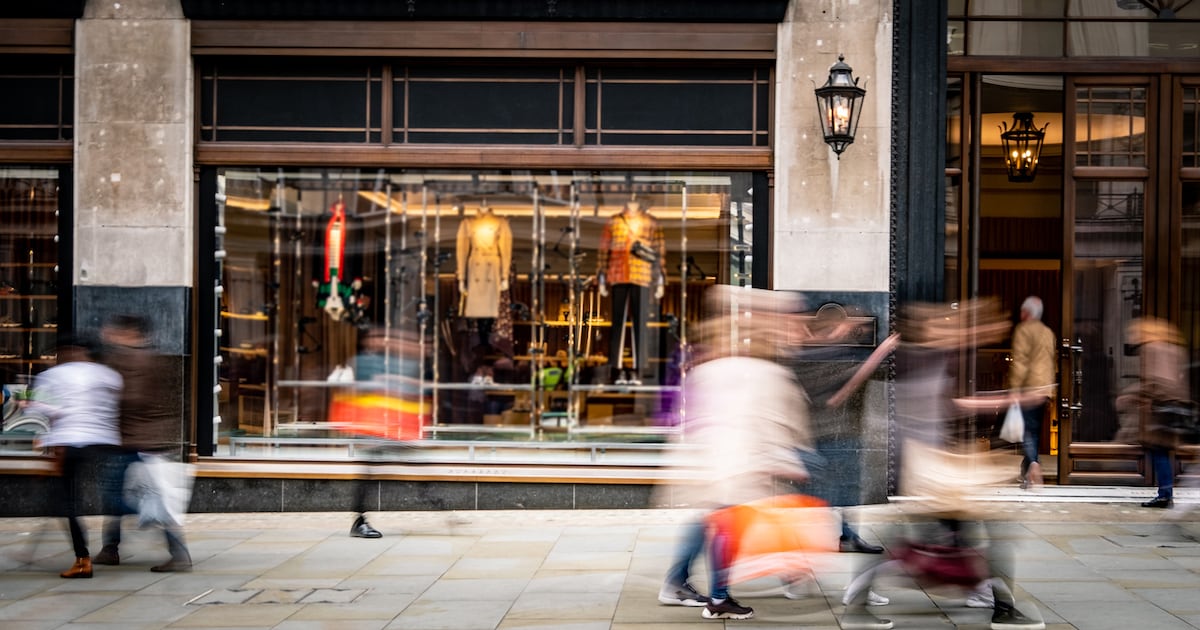Fashion is bracing for a challenging end to the year.
For months, concerns about the economy have been mounting, centring on US consumers amid a slowdown in the formerly red-hot jobs market and record levels of credit card debt.
Those fears have so far not shown up at the mall. But even as they report strong second-quarter sales and profits this month, numerous retailers have warned that the good times are unlikely to last.
Kohlâs, Lululemon and American Eagle trimmed their annual sales forecasts this week, while Foot Locker, PVH Corp. and Birkenstock affirmed their already-cautious previous guidance. Gap affirmed its full-year sales guidance of slight growth amid a turnaround under chief executive Richard Dickson.
For the most part, investors were not pleased. Shares of many of these retailers plunged after they released results, Foot Locker sunk 12 percent, and PVH fell 6 percent. Even shares of retail wunderkind Abercrombie & Fitch plummeted 17 percent after it raised its annual sales outlook to $4.3 billion, below Wall Streetâs expectations of $4.8 billion.
Shoppers are already flocking to lower-priced retailers, often a sign that the economy is cooling. Off-price chains like T.J. Maxx and Walmart both raised expectations and have seen shares roar this month. Nordstrom also raised its fiscal outlook on a better-than-expected quarter that was boosted in part by momentum in its Rack segment.
But retailers that donât operate in the off-price category may find themselves relying on promotions to hold onto customers, analysts warn.
âWeâre going to see a bit more survival of the fittest, cream rising to the top [for fashion],â said Katie Thomas, Kearneyâs Consumer Institute lead. âThereâs almost too many options and thatâs why it feels like death by a thousand cuts for retailers.â
Defined By Discounts
Discount and value shopping has grown faster than general retail spend since 2022, according to a report from Bank of America. For mass and mid-price consumers, this means thereâs increasing pressure to discount even for those in healthy financial positions.
But retailers must tread carefully, according to Sonia Lapinsky, managing director and retail advisor at consultancy AlixPartners. Rampant discounts can eat at profitability, but promotions can be a powerful tool for moving merchandise.
âPricing is going to be a huge lever for retailers, but theyâve got to be much more surgical about it. It canât just be 40 percent off the whole store,â said Lapinsky, adding retailers can strategise discounting based on what products are capable of actually bringing shoppers in.
Discounting has to be balanced with other activities, especially at a time when consumers are frustrated because retailers arenât getting the basics, like mix and customer service right, she added. On its earnings call, Lululemon chalked a slowdown in its womenswear business up to merchandising misses.
A well-timed and culturally savvy marketing strategy couldnât hurt, either.
PVH, for instance, is set on reviving its flagship Tommy Hilfiger and Calvin Klein brands with buzzy campaigns, including another Jeremy Allen White spot for Calvin Klein this week. Gap, led by new CEO Richard Dickson and creative director Zac Posen, released a campaign fronted by Troye Sivan last week, on the heels of a successful stream of collaborations with labels such as Madhappy.
Trading Down or Just Trading Around?
Luxury has been hampered by an ongoing slowdown, particularly among aspirational shoppers in the US. Most consumers traded down, meaning they delayed purchases, bought less or hunted for better prices, from May to August, McKinsey found in a report on consumer sentiment last week.
Shoppers are being driven by value, but theyâre âscrimping and splurging,â said TD Cowen analyst Oliver Chen. In other words, they have been trading up where they want to and trading down where they need to.
Private label brands at Nordstrom and Walmart have gained momentum, and dupe culture â where consumers brag about cheaper but similar alternatives to popular products on social media â continues to drive spending. Consumers have myriad options, meaning, quality is a big factor in making a decision and brands need to nail their price-value equation, said Thomas.
Retailers lost in the middle will be tested if they capture neither a scrimping nor a splurging shopper.
Amid the gloom, there are some causes for hope: interest rate cuts, which could ease pressure on consumers, are expected in September. Despite a disappointing jobs report, wage growth has stayed steady. Analysts will be watching for mass layoffs which would bruise consumer confidence, as well as for the outcome of a consequential election on the horizon. But fashion has sounded the alarm on an imminent drop in spending before, and consumers have responded, largely, by continuing to shop.
âThe word âresilientâ has lost all meaning, but the consumer is hanging in there,â said Thomas. âConsumers are coping with realities and thatâs where weâll be for the next couple of months.â

